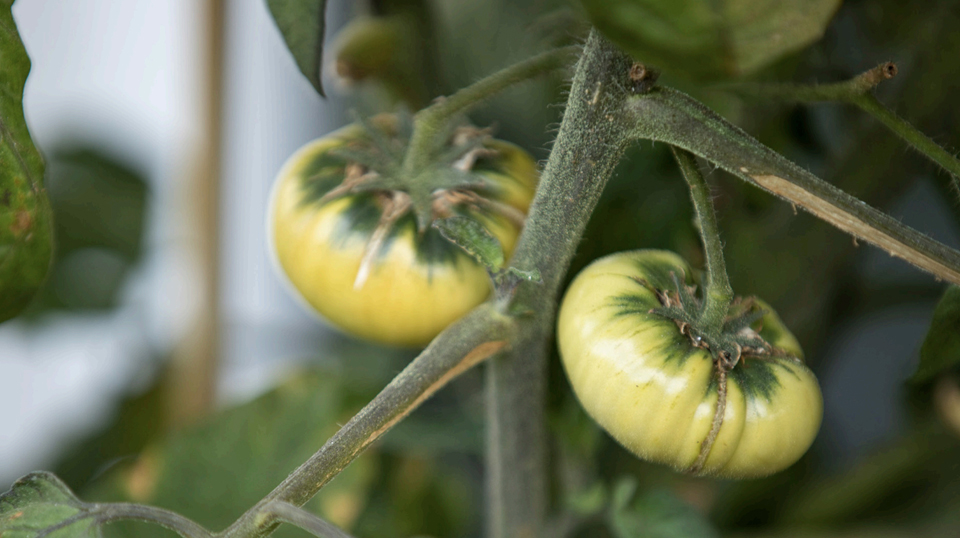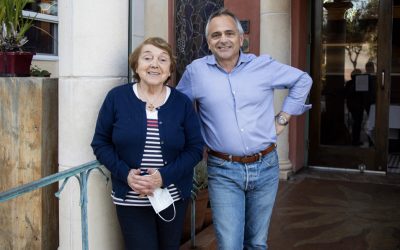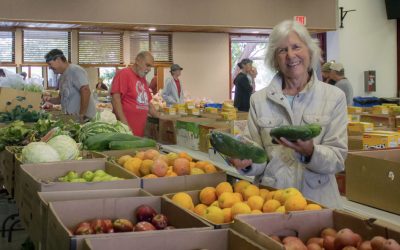W. Atlee Burpee & Co. says it’s sold more seed in 2020 than any other time in its 144-year history
A month into seclusion, a honey gold potato in a basket on my kitchen counter began to sprout. The eyes grew thick, leafy lashes. What to do? There’s little room in my diminutive yard to cultivate any type of vegetation.
An industrial-strength Hefty bag became a planter ‘tower,’ set inside a large cardboard box for stability. I placed the sprouting eyes cut side down, about twelve inches apart, in six inches of soil. Dark green leaves poked up in a few days. I covered the fragile stalks with mulch and drizzled them with water.
Three months later, my fingers probed humus for ‘two-bite’ potatoes. A ten-minute steam bath and then mashed with a fork. Eaten plain, they tasted like sweet butter.
On a particularly topsy-turvy day, I reclaimed calm by sowing French Breakfast radish, Purple Haze carrot, and heirloom parsnip seeds in egg cartons and plastic ice cube trays. Set on west-facing windowsills, a minute world of vigor and revelation.
“There are certain, very stabilizing forces in gardening that can ground us when we are feeling shaky, uncertain, terrified really,” wrote Joel Flagler, a professor at Rutgers University. “It’s these predictable outcomes, predictable rhythms of the garden that are very comforting right now.”
When transplanting, I gently tucked radish roots into soil-filled shoe boxes. Touchstone Gold beets and Heirloom acorn squash grew in a carton that had delivered a turntable. Other boxes cradled burpless cucumbers and Better Boy tomatoes.
An industrial-strength Hefty bag became a planter ‘tower,’ set inside a large cardboard box for stability. I placed the sprouting eyes cut side down, about twelve inches apart, in six inches of soil. Dark green leaves poked up in a few days. I covered the fragile stalks with mulch and drizzled them with water.
Three months later, my fingers probed humus for ‘two-bite’ potatoes. A ten-minute steam bath and then mashed with a fork. Eaten plain, they tasted like sweet butter.
On a particularly topsy-turvy day, I reclaimed calm by sowing French Breakfast radish, Purple Haze carrot, and heirloom parsnip seeds in egg cartons and plastic ice cube trays. Set on west-facing windowsills, a minute world of vigor and revelation.
“There are certain, very stabilizing forces in gardening that can ground us when we are feeling shaky, uncertain, terrified really,” wrote Joel Flagler, a professor at Rutgers University. “It’s these predictable outcomes, predictable rhythms of the garden that are very comforting right now.”
When transplanting, I gently tucked radish roots into soil-filled shoe boxes. Touchstone Gold beets and Heirloom acorn squash grew in a carton that had delivered a turntable. Other boxes cradled burpless cucumbers and Better Boy tomatoes.
After a while, layers of cardboard grew soggy and peeled in on themselves. New boxes appeared on the front porch as if by magic—immediately emptied of Styrofoam peanuts and ladled with potting soil. No snails, gophers, or leaf-munching rabbits.
It isn’t merely a concern for food shortages, rising costs, and the anxiety of shopping that teased me back to soil. Gardening is a gathering place for our expressive-infused selves, a space where inner and exterior worlds balance.
I remember my grandparents’ overgrown garden. Both pairs migrated to California’s legendary sunny skies from the Midwest in the 1920s. One grandmother sang “Hey Good Lookin’” while shoveling manure from the chicken coop to use as compost. The other walked barefoot over dirt paths winding through plots free of weeds, rocks, and pests. I recall the first time I plucked ripe tomatoes. Little spheres of magic!
Decades ago, my parents hired a crew to fill in their swimming pool. The lagoon-style basin was turned over to plants. A dwarf lemon tree grew in the former Jacuzzi. Time passed and large planters gave way to smaller, more manageable pots. When roots withered from lack of care, my stepfather walked to the hardware store for a can of green spray paint, and later bragged about his ingenuity. I shrieked, “You sprayed them with chemicals?”
It isn’t merely a concern for food shortages, rising costs, and the anxiety of shopping that teased me back to soil. Gardening is a gathering place for our expressive-infused selves, a space where inner and exterior worlds balance.
I remember my grandparents’ overgrown garden. Both pairs migrated to California’s legendary sunny skies from the Midwest in the 1920s. One grandmother sang “Hey Good Lookin’” while shoveling manure from the chicken coop to use as compost. The other walked barefoot over dirt paths winding through plots free of weeds, rocks, and pests. I recall the first time I plucked ripe tomatoes. Little spheres of magic!
Decades ago, my parents hired a crew to fill in their swimming pool. The lagoon-style basin was turned over to plants. A dwarf lemon tree grew in the former Jacuzzi. Time passed and large planters gave way to smaller, more manageable pots. When roots withered from lack of care, my stepfather walked to the hardware store for a can of green spray paint, and later bragged about his ingenuity. I shrieked, “You sprayed them with chemicals?”
Over the months, I’ve transformed a twenty-square-foot concrete patio into fantastical boxes of edibles. I scattered flower seeds in and around platter-size zucchini leaves: cosmos, calendula, lupine, and some I won’t recognize until they bloom. The area appears to have come from the pages of The Vegetable Gardener’s Bible, though I care more about the way it makes me feel than how it looks.
Never again shall I toss healthy carrot tops in the green bin. Instead, I mince and oven toast them for salads, soups, and grain bowls. The tops store well in an airtight container. They don’t mind being frozen.
I followed a vegan recipe for carrot top pesto (greens blanched and pulsed in the food processor with minced garlic, lemon zest, fresh mint leaves, olive oil, and pine nuts) and experimented with hummus and chimichurri sauce. Carrot tops have six times more vitamin C than their roots.
Another idea: I set the top 1⁄4 inch of a dozen radishes in individual compartments of an ice cube tray. A few drops of water and the crowns sprouted a fresh crop of greens. I followed the pesto recipe, slathering the thick sauce on crusty bread and spooning it over polenta.
I tried a similar method with the cut ends of lettuce. Even after being in the refrigerator a week, Butterhead outgrew Romaine and Escarole by leaves and bounds. I sliced two inches from the root end of a bunch of celery and set it in a shallow saucer. Frilly leaves emerged from the center and grew into upward reaching stalks.
Never again shall I toss healthy carrot tops in the green bin. Instead, I mince and oven toast them for salads, soups, and grain bowls. The tops store well in an airtight container. They don’t mind being frozen.
I followed a vegan recipe for carrot top pesto (greens blanched and pulsed in the food processor with minced garlic, lemon zest, fresh mint leaves, olive oil, and pine nuts) and experimented with hummus and chimichurri sauce. Carrot tops have six times more vitamin C than their roots.
Another idea: I set the top 1⁄4 inch of a dozen radishes in individual compartments of an ice cube tray. A few drops of water and the crowns sprouted a fresh crop of greens. I followed the pesto recipe, slathering the thick sauce on crusty bread and spooning it over polenta.
I tried a similar method with the cut ends of lettuce. Even after being in the refrigerator a week, Butterhead outgrew Romaine and Escarole by leaves and bounds. I sliced two inches from the root end of a bunch of celery and set it in a shallow saucer. Frilly leaves emerged from the center and grew into upward reaching stalks.
Each day is spring on my windowsill, a type of U-pick and snip farm. I began to think of carrot tops as emeralds, radishes as rubies, and parsnips as pearls. Kitchen counters and bedside tables became still-life paintings.
Such discoveries and bounty must be shared. Twine and ribbon spruced up old pickle and mayonnaise jars, vessels for flowers, sprouting celery roots, or leafy carrot tops. Gifts for friends and neighborhood children, reminding us of our kinship with the planet. As long as we have a west-facing window we have ways to plan and plant, reflect, and act.
Such discoveries and bounty must be shared. Twine and ribbon spruced up old pickle and mayonnaise jars, vessels for flowers, sprouting celery roots, or leafy carrot tops. Gifts for friends and neighborhood children, reminding us of our kinship with the planet. As long as we have a west-facing window we have ways to plan and plant, reflect, and act.





